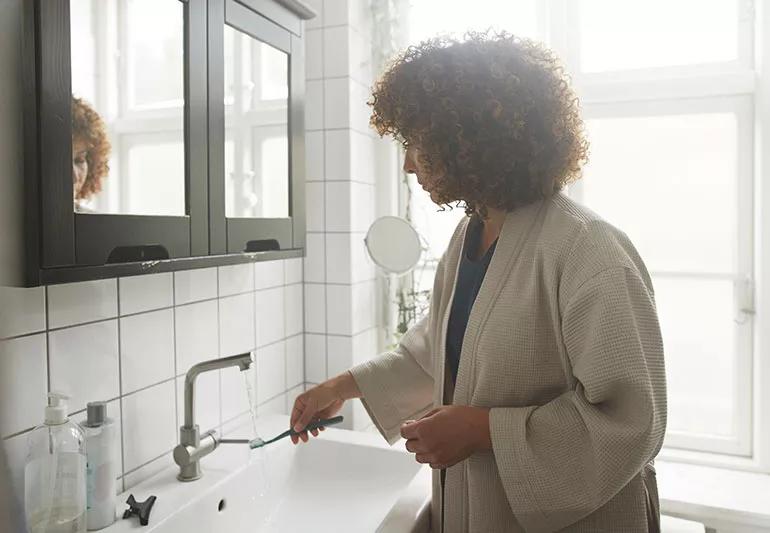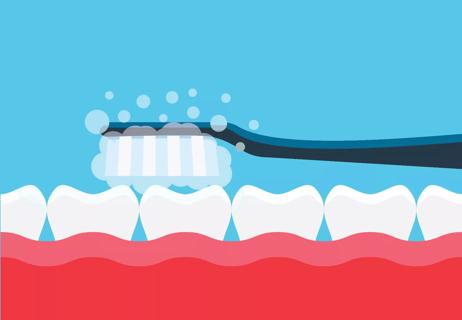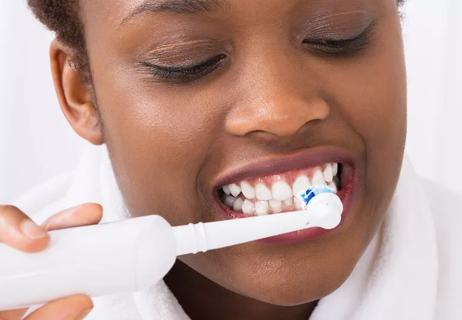It’s simpler than you might think

Over the years, people have tried all sorts of ways to clean their toothbrushes. Some run it through the dishwasher. Others soak the head in mouthwash or effervescent denture cleaner. Others freeze it, boil it or invest in a pricey ultraviolet toothbrush sanitizer.
Advertisement
Cleveland Clinic is a non-profit academic medical center. Advertising on our site helps support our mission. We do not endorse non-Cleveland Clinic products or services. Policy
But are these the best ways to disinfect your toothbrush? And do these methods even work?
“The bottom line is, that none of that is necessary,” says dentist Karyn Kahn, DDS. Read on as she shares what actually works to keep your brush in tip-top shape.
Cleaning a toothbrush is simpler than you might think. In fact, you don’t need to purchase any fancy bathroom accessories or toiletries.
Forget soaking a toothbrush in mouthwash or denture cleaner or using UV light cleaners. “I suggest just rinsing your toothbrush in good, hot water,” says Dr. Kahn. If you see any chunks of toothpaste or food on your toothbrush, be sure to also rinse it well to dislodge them.
The reason you use hot water is that you have a natural flora of bacteria living in your mouth that’s necessary for a healthy environment. It’s not important to try to completely remove this bacteria from your toothbrush.
Believe it or not, you don’t want your toothbrush to be free of bacteria. “If you don’t have that bacteria, that’s when opportunist microorganisms like yeast and fungi take over,” explains Dr. Kahn. “You want a certain amount of natural bacteria in your mouth, just not around the teeth or gum tissue.”
In its recommendation about toothbrush care, the American Dental Association (ADA) cites studies that have found no evidence of negative oral health effects from normal bacteria on a toothbrush.
Advertisement
However, Dr. Kahn does have tips for keeping a clean and effective toothbrush.
At any time, if you have any questions about the effectiveness of your toothbrush, a good rule of thumb is to get a new one. Some experts even recommend having two toothbrushes and alternating while one dries.
Advertisement
Learn more about our editorial process.
Advertisement

You might have a sensitive gag reflex — but gagging while brushing can also be a result of certain medical conditions

A variety of products can be effective at removing stains on teeth

Studies show they do a better job than manual brushes at removing plaque and debris

Brushing for two minutes, twice a day is your baseline for dental health

It’s all about choosing the right toothbrush and hitting a 45-degree angle

Tricks to finding a toothpaste that really works

Prescription oral antivirals are your best bet, but OTC creams can help, too

Clean your baby’s mouth with a washcloth or small toothbrush if they have a tooth or you suspect thrush

If you’re feeling short of breath, sleep can be tough — propping yourself up or sleeping on your side may help

If you fear the unknown or find yourself needing reassurance often, you may identify with this attachment style

If you’re looking to boost your gut health, it’s better to get fiber from whole foods